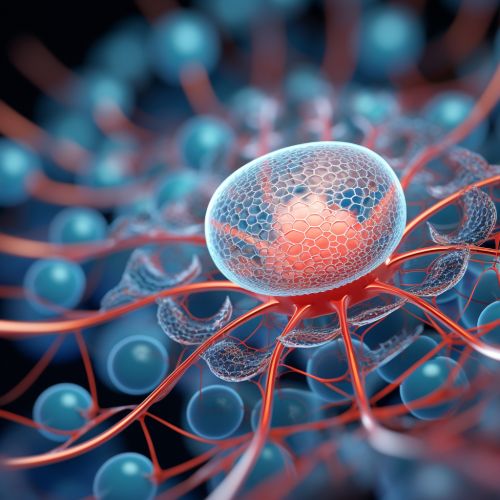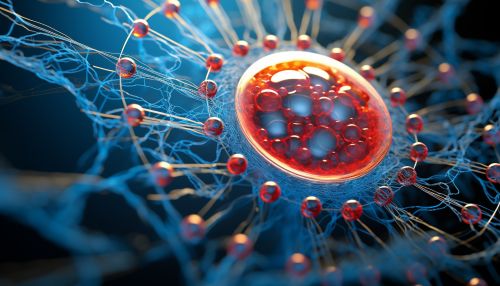Post-transcriptional regulation
Introduction
Post-transcriptional regulation is a molecular biology process that controls the rate and manner in which mRNA transcripts are processed, transported, and degraded. This regulation is a critical component of gene expression and thus, plays a vital role in the functionality of cells.


Mechanisms of Post-transcriptional Regulation
There are several mechanisms through which post-transcriptional regulation occurs. These include RNA processing, RNA transport and localization, mRNA degradation, and translational regulation.
RNA Processing
RNA processing is a key step in post-transcriptional regulation and involves the modification of RNA molecules after transcription. One of the most common forms of RNA processing is RNA splicing, which involves the removal of introns and the ligation of exons to produce a mature mRNA molecule. Other forms of RNA processing include 5' capping, 3' polyadenylation, and RNA editing.
RNA Transport and Localization
Once the RNA has been processed, it must be transported from the nucleus to the cytoplasm for translation. This transport process is highly regulated and involves specific nuclear pore complexes and transport proteins. Additionally, the localization of mRNA within the cytoplasm can also be regulated, influencing where the protein product will be synthesized within the cell.
mRNA Degradation
mRNA degradation is another important aspect of post-transcriptional regulation. The stability of an mRNA molecule can greatly influence the level of protein that is produced. There are several pathways through which mRNA can be degraded, including the decapping pathway, the nonsense-mediated decay pathway, and the non-stop decay pathway.
Translational Regulation
Finally, the rate at which an mRNA molecule is translated into protein can also be regulated. This can occur through the modification of the translation initiation factors, the availability of tRNAs, and the interaction of the mRNA with microRNAs or RNA-binding proteins.
Factors Influencing Post-transcriptional Regulation
Several factors can influence the process of post-transcriptional regulation. These include the sequence of the mRNA molecule, the presence of specific protein factors, and the conditions within the cell.
Sequence Elements
Certain sequence elements within the mRNA molecule can influence its processing, transport, stability, and translation. These include the 5' cap, the poly(A) tail, the coding sequence, and various regulatory sequences.
Protein Factors
Numerous protein factors are involved in post-transcriptional regulation. These include the various enzymes involved in RNA processing, the transport proteins that shuttle RNA between the nucleus and the cytoplasm, the ribonucleases that degrade mRNA, and the proteins that regulate translation.
Cellular Conditions
The conditions within the cell can also influence post-transcriptional regulation. For example, stress conditions can lead to the activation of specific signaling pathways that alter RNA processing, transport, stability, and translation.
Role in Disease and Therapeutics
Abnormalities in post-transcriptional regulation can lead to a variety of diseases, including cancer, neurological disorders, and cardiovascular diseases. Therefore, understanding the mechanisms of post-transcriptional regulation can provide insights into the development of novel therapeutic strategies.
